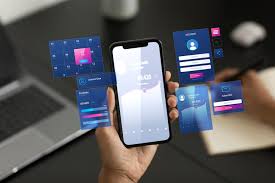In an age where smartphones are always within arm’s reach, it’s easy to fall into the trap of distraction. Social media apps, games, messaging — they can steal hours from your day, affect productivity, or even disrupt your sleep. For many iPhone users, the solution lies in app blockers — tools that help you control or limit your access to applications and websites.
But not all app blockers are created equal. The best ones are intuitive, flexible, don’t let you simply bypass restrictions on a whim, and blend well with iOS’s own tools (like Screen Time). In this post, we’ll explore why app blockers matter, what features to prioritize, the leading options as of 2025, how to use built-in iPhone capabilities, and tips to make them more effective.
Why Use an App Blocker?
Before diving into the options, let’s consider the benefits:
- Boosted productivity: Less time wasted on apps that pull you in — more time for work, study, hobbies.
- Mental wellbeing: Reducing continuous checking and social media use can reduce anxiety, increase focus, and improve sleep.
- Digital detox: Helps you take breaks from screens and break addictive usage patterns.
- Parental control: For parents, limiting children’s exposure to certain apps or setting usage schedules.
- Self-discipline & habit forming: Fewer weak moments where you unlock your phone without thinking.
What to Look for in a Good iPhone App Blocker
When choosing an app blocker, consider these factors:
| Feature | Why it matters |
|---|---|
| Strict lock / non-bypassable modes | If the blocker is easy to disable or bypass, it loses its point. |
| Scheduling & timers | You want to set blocks for certain hours (e.g. work hours, night), or limit daily usage. |
| Blocking both apps and websites | Many distractions come from both — social apps, YouTube, websites, etc. |
| Analytics / usage tracking | Helps you understand your habits so you can adjust. |
| Cross-device sync (if needed) | If you use multiple devices, you might want consistent limits. |
| Ease of setup and use | If it is too complicated, you might avoid using it. |
| Cost / free features | Many have free tiers; you’ll want to see if paid features are worth it. |
| Privacy & permissions | Since blockers often need special permissions (VPN, access to usage data), make sure they respect privacy. |
Top App Blocker / Focus Tools for iPhone (2025)
Here are some of the best app blockers and focus tools currently available for iOS, with their strengths and limitations.
| App / Tool | Pros | Cons / Limitations |
|---|---|---|
| Refocus: App Blocker & Limits | • Clean, user-friendly interface. • Lets you block any app or website, with timed or scheduled blocks. • “Strict Mode” to prevent easy unblocking (e.g. passcode, cooldowns, Pomodoro etc.). • Good analytics on app usage. Apple | • Some features are behind premium / in-app purchases. • Strict mode reliability might depend on external factors. • If you often need to override blocks, that friction might bother you. |
| AppBlock | • Strong scheduling features, usage limits, strict mode. • “Strict Mode” which prevents bypassing. • Has free tier. • Effective for managing screen time and reducing distractions. Apple+1 | • Some users report issues with strict mode reliability or with scheduling. • The free version has limits. • Requires configuring well to get best results. |
| Freedom | • Works across devices — iPhone, iPad, Mac, Windows etc. • Allows synchronized sessions of blocking across your ecosystem. • Powerful blocklists and scheduling. • Good reputation. Zapier+1 | • Costlier than simpler apps. • May be overkill if you only need occasional blocking. • Setup takes a bit more time. |
| Mobicip | • More focused on parental control: filters internet, sets usage limits, blocks apps. • Lets you manage content and restrict websites and apps. • Good for families. Wikipedia | • If you’re the sole user, some features may be more than you need. • Paid plans for advanced control. • May require consistent updates as new apps/websites emerge. |
| Canopy (by Netspark) | • Strong web filtering + app blocking. • Real-time alerts, especially for inappropriate content. • Flexible rules around screen time, downtime etc. Wikipedia | • Might be more focused on content filtering / safety than productivity for adults. • Cost and complexity may be higher. • Depending on region, some features may work better or worse. |
Built-in iPhone Tools: Screen Time, iOS Features
You may not always need a third-party blocker. Apple provides several built-in tools that can do a lot of what blockers do, and often with tighter privacy/integration.
- Screen Time
Located in Settings → Screen Time, this lets you:- Set App Limits: Limit usage per app or app category per day.
- Downtime: Choose hours when only certain apps are allowed.
- Always Allowed: Select apps that are always available even during Downtime or limit periods.
- Content & Privacy Restrictions: To restrict certain apps or features.
- iOS 18 “Lock App with Face ID / Touch ID”
Apple added features that let you lock any app (including third-party apps) using biometrics. You can also hide apps. The Verge - Guided Access
This is useful to lock the device to a single app (for example for children or yourself to avoid switching apps). Exiting requires password/Face ID. Great for focused tasks. - Parental Controls (via Family Sharing / Supervised Device)
If you’re managing a child’s device, you can supervise the device and set stricter content, age rating, and app installation restrictions.
These built-in tools benefit from seamless system integration, stronger privacy, and zero or lower cost. In many cases, using them in combination with a third-party blocker may give the best results.
Comparing Built-in vs Third-Party Blockers
| Criteria | Built-in (Screen Time / iOS features) | Third-Party Apps |
|---|---|---|
| Integration | Very high. Deep in OS. Less chance of being bypassed. | Good, but may depend on workarounds / permissions. Some features limited by what iOS allows. |
| Cost | Usually free. | Some free features; many require subscription or pay-once for premium features. |
| Flexibility & Features | Good for basic limits (time, categories, downtime). But strict bypass prevention features may be limited. | More features: more scheduling options, Strict modes, app + website blocking with stronger resistance, analytics, etc. |
| Privacy & Permissions | Managed by Apple; more transparent usually. | Need to read privacy policy; some require more intrusive permissions (VPN, usage access etc.). |
| Suitability for Parental Control | Excellent when combined with supervised device / family settings. | Also good; some are better suited for family management with dashboards. |
Which One Is Best for You?
Your choice should depend on your priorities. Here are some scenarios:
- If you just want to cut down on social media time or stop doom-scrolling at night → a lighter app with schedule/time limits (Refocus, AppBlock) might suffice.
- If you need strong discipline, where bypassing is difficult → apps with strict mode, or using both built-in + third-party.
- If you’re managing kids or multiple devices → ones like Mobicip, Canopy, or Freedom with cross-device sync and parental dashboards.
- If budget matters → start with built-in Screen Time tools; pick free tiers; see if paid upgrades are worth it.
How to Set Up an App Blocker Properly
To get the most out of any blocker:
- Define your goal clearly
Are you trying to reduce screen time, boost productivity, get better sleep, limit kids’ phone usage? Your goal informs settings. - Start with built-in tools
Try using Screen Time to set app limits or downtime. See what you need that it doesn’t provide. - Choose a third-party app if needed
When built-in tools lack something (e.g. strict mode, scheduled recurring blocks, detailed analytics), pick an app that complements them. - Use strict modes / lock features
If possible, choose features that make it inconvenient to circumvent the rules (like passcodes, cooldowns, or features that require challenges to unblock). - Schedule blocks
Set recurring blocks (e.g. 9 pm-7 am, work hours) rather than trying to enforce manually. - Monitor usage
Use analytics daily or weekly. See which apps are consuming time, patterns of use, and adjust blocks accordingly. - Adjust and iterate
What works at first may need tweaking. Increase strictness if you find workarounds; loosen if it frustrates.
Potential Limitations & How to Overcome Them
- iOS restrictions: Apple doesn’t allow apps to do everything third-party apps might do on Android. Some blockers may have limited control.
- Ability to bypass: Without strong strict modes, you might just disable the blocker or reset limits. Discipline still matters.
- Cost of premium features: Some powerful features are locked behind subscription payments. Evaluate whether the benefit justifies the cost.
- Notifications / system alerts: Even blocked apps may send notifications or other system‐level signals. You may need to turn those off manually.
- Privacy concerns: Check how the blocker uses data; some need VPN or usage access. Ensure you trust the app’s privacy practices.
Recommendations & My Top Picks
Based on the above, here are my recommendations:
- Best All-round (for most users): Refocus — balances ease of use, strong strict features, and good scheduling and tracking.
- Best Cross-device / Ecosystem blocker: Freedom — if you use multiple devices and want unified control.
- Best Free / Budget Option: Screen Time + possibly AppBlock free tier — you get a lot without spending.
- Best for Parents / Families: Mobicip or Canopy — with child safety, filtering, dashboards etc.
Conclusion
App blockers are powerful tools to take back control over your attention, time, and habits. The best app blocker for iPhone depends on your goals: productivity, focus, parental control, or general digital wellness. Start with built-in tools, try one or two third-party options, and adjust based on your behavior. Over time, you’ll find the setup that truly helps reduce distractions rather than adding more friction.









